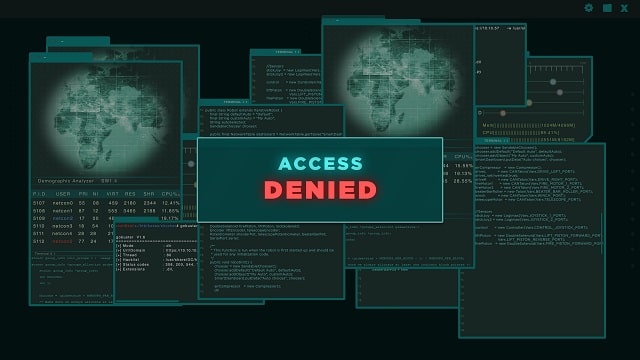Fortinet Acquires Next DLP Strengthens its Top-Tier Unified SASE Solution
Read the release
Companies need to take effective action to mitigate insider threats that pose a danger to their businesses. Potential insider threats can manifest in a wide variety of ways that are challenging to address without taking appropriate measures and following best practices. That's why developing an effective insider threat mitigation program is crucial.
Many organizations focus on defending their IT resources from external attackers who intentionally cause harm. However, this emphasis may be misplaced, as greater damage can often be perpetrated by an accidental or malicious insider. For example, research indicates that an insider data leak is likely to involve five times more files and records than a data breach conducted by external threat actors.
Consider the following six steps and best practices for insider threat mitigation and protect your data and systems:
 |
All existing IT resources must be identified and inventoried as part of a mitigation program, as it's impossible to manage insider threats without understanding where sensitive or critical data is stored and processed. This process can be complicated in organizations employing a hybrid or multi-cloud infrastructure.
Once data assets have been identified, they can be categorized to facilitate providing them with the right level of protection. Some types of information may require special handling or have access tightly restricted to privileged accounts.
New information ingested into the environment also needs to be categorized correctly to ensure it gets the handling it requires.
 |
The categories defined when inventorying the environment provide a starting point for the development of an organizational data handling policy. This policy will form the foundation for additional measures to mitigate insider threats. A data handling policy can be broad or fine-grained, based on the information involved and business requirements.
When developing a data handling policy, it's crucial to consider who can use specific data elements for business purposes. It’s better to make the policy too tight at first to ensure excessive data access is not provided to accidental insiders who may unintentionally expose sensitive data or malicious insiders attempting to steal intellectual property.
Lastly, the policy should be a living artifact that is modified to address operational requirements.
 |
Strict access controls, authentication processes, and authorization procedures should be implemented and enforced across the total IT environment. Ideally, no one should have privileged account access to any business-critical system, application, or data resources without a legitimate business purpose.
Tracking and monitoring all access requests is essential in an insider threat program, and specific measures such as multi-factor authentication (MFA) should be used to protect the company’s data resources.
Strong passwords should be mandatory to prevent credentials from being compromised and misused by malicious insiders, and user IDs should be removed from the environment as soon as they are no longer needed.
 |
Employees should be trained on the data handling policy so they understand how they can use the organization’s information assets. Training should include security awareness training that teaches employees to identify phishing attacks and other forms of social engineering, which helps to prevent the accidental disclosure of sensitive information. Users should know what data they can access and how it can be used without putting it at risk.
As part of an effective insider threat program, everyone in the organization should be aware of their responsibility and role in protecting company data from intentional or unintentional insider threats. Proper training can reduce the risk of mistakes and harmful actions such as sending files containing sensitive information via email. It’s always preferable to avoid the mistake at the source when possible.
 |
Monitoring anomalous behavior is necessary to effectively mitigate the risk of insider threats. Identifying potentially malicious activity such as an individual repeatedly attempting to access restricted data may indicate the presence of a deliberate insider threat. The offending person can be notified that their transgressions have been noted and monitored more closely going forward.
It may be that the individual just needs additional training on the data handling policy. With modern insider threat prevention software solutions, this training can be done interactively when an anomaly is identified.
Data loss prevention (DLP) software is an integral component of an insider threat mitigation program. DLP software mitigates both deliberate and unintentional insider threats by identifying information and automatically enforcing an organization’s data handling policy.
The software can take actions, such as blocking sensitive data from being sent via email, to prevent misuse and accidental exposure.
The Reveal platform by Next is a modern DLP solution that mitigates the risks of insider threats. What follows are just some of the features that differentiate the Reveal platform from competing solutions.
Talk to the DLP experts at Next and learn how Reveal can support your insider threat mitigation program. Request a demo to see the tool in action or watch on-demand demo videos here.
Yes, insider threats pose a serious problem to businesses in all market sectors. Statistics indicate that up to 60% of data breaches are caused by insider threats. This includes malicious activity—such as deliberate attempts to steal data or intellectual property—as well as unintentional threats due to negligence or lack of training.
A DLP tool guards against both types of insider threats by enforcing the data handling policy.
Multi-factor authentication (MFA) mitigates insider threats by making it less likely that a malicious insider can compromise another employee’s credentials and access restricted resources. When MFA is implemented, authentication requires more than a username and password.
It often involves sending a message or security code to a secondary device that is not available to the malicious individual.
Activities are categorized as being anomalous through measurement against typical and expected activities and user behavior. Next's Reveal begins baselining activity when the software is deployed and continuously updates its database of acceptable behavior.
It can identify and restrict a user from performing a prohibited activity like downloading a file of customer data to a personal device. This type of activity would never be considered typical and will be flagged by the software.

Blog

Blog

Blog

Blog

Resources

Resources

Resources

Resources

